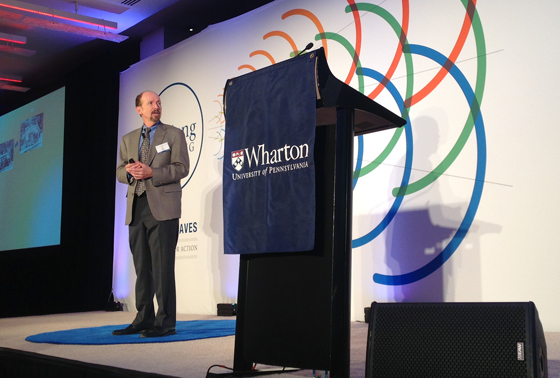On January 29, Robert Meyer came to New York to speak about disaster resilience. As a co-director of the Wharton Risk Management and Decision Process Center, few know more about the topic than he does.
The crowd was mostly University of Pennsylvania alums who have migrated north to Manhattan, so the tragedy of Hurricane Sandy was fresh on their minds and it became the most common point of reference used by Meyer to explain how we do — and do not — prepare for disasters.
He detailed offered an array of reasons for why we — as individuals and a society — tend to under-prepare for natural hazards. “We tend to be overly myopic, over-concentrating on a small set of preparation actions,” said Meyer.
Interestingly, however, there is an inverse to this. He noted that some people, particularly those who have gone through a traumatic event in the past, like 9/11, do prepare well. They adopt what he called a “psychology of misfortune” and tend to remain extra vigilant.
“That’s unfortunately an outlier,” said Meyer.
Another noteworthy, yet counterintuitive, aspect of preparedness is that most many people actually overestimate the likelihood of bad events. This is based on research, he said, and flies in the face of the often-held belief that the biggest impediment to good preparation is people saying “it won’t happen to me.
”
Instead, people believe it will happen to them — they just don’t understand what “it” is.
When surveyed before Sandy, for example, people in the New York area overestimated their risk of getting hit with hurricane-force winds. By a ton. The public in some places put their chances of being hit at some 50%-60%.
The real, scientific likelihood was closer to 10%-20%.
Yet, even though people vastly overestimated their risk, they still maintained an optimistic view about their safety. The huge majority believed the would be safe during the storm.
This speaks to a gross misunderstanding of the risk actually faced.
Outside of a tornado or sustained Category 3 or higher hurricane-strength winds, storm surge and flooding are usually the real risks for most people in most zip codes. Prolonged power outages, particularly in the Northeast in the late fall when cold temperatures are a concern, would also far outrank wind-fueled projectiles as far as a threat to life, security and economy.
In short, people neither understood the science of the storm nor the long-term disruption it could potentially have.
And this wasn’t an anomaly. Meyer noted that, often, it’s not the hurricane itself that you have to prepare for but the two weeks after the hurricane when you don’t have power. But, as with Sandy, many people thought if they got through that first night or two, they would be all set.
This all suggests a lack of understanding, and something all stakeholders in the area of disaster preparedness will have to work to overcome in the months, years and decades ahead.
“We don’t have a problem deciding whether to prepare,” said Meyer. “We have a problem deciding how much to prepare.”

